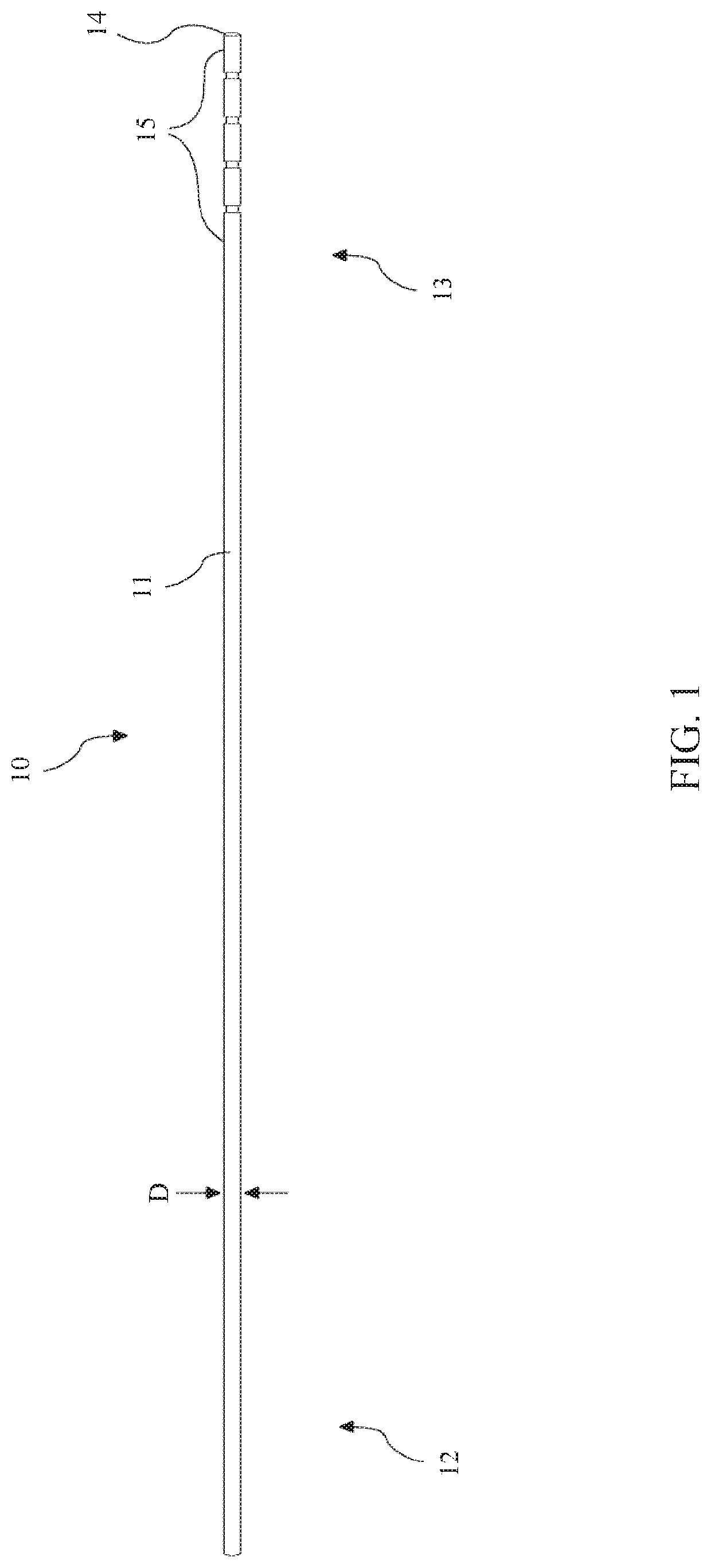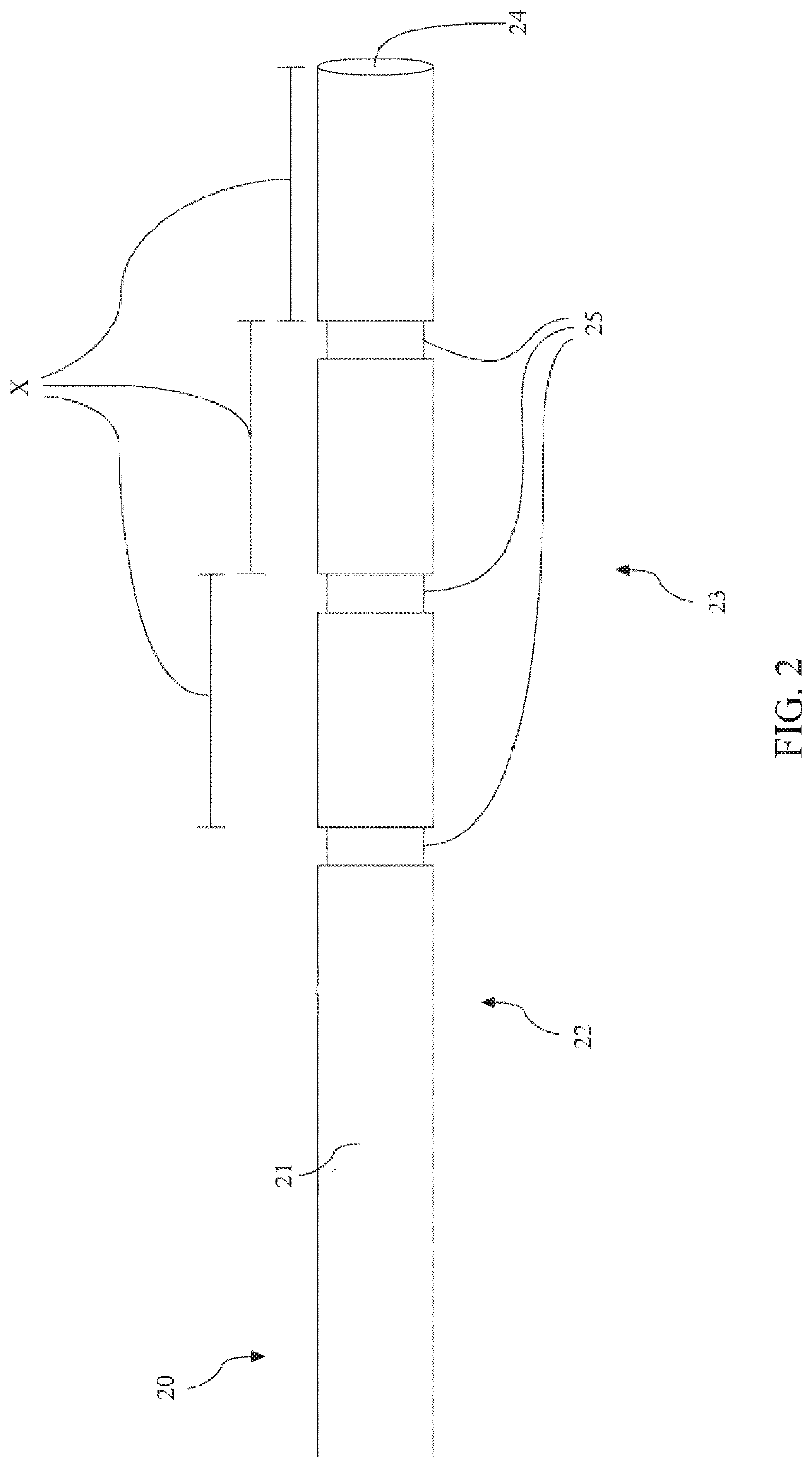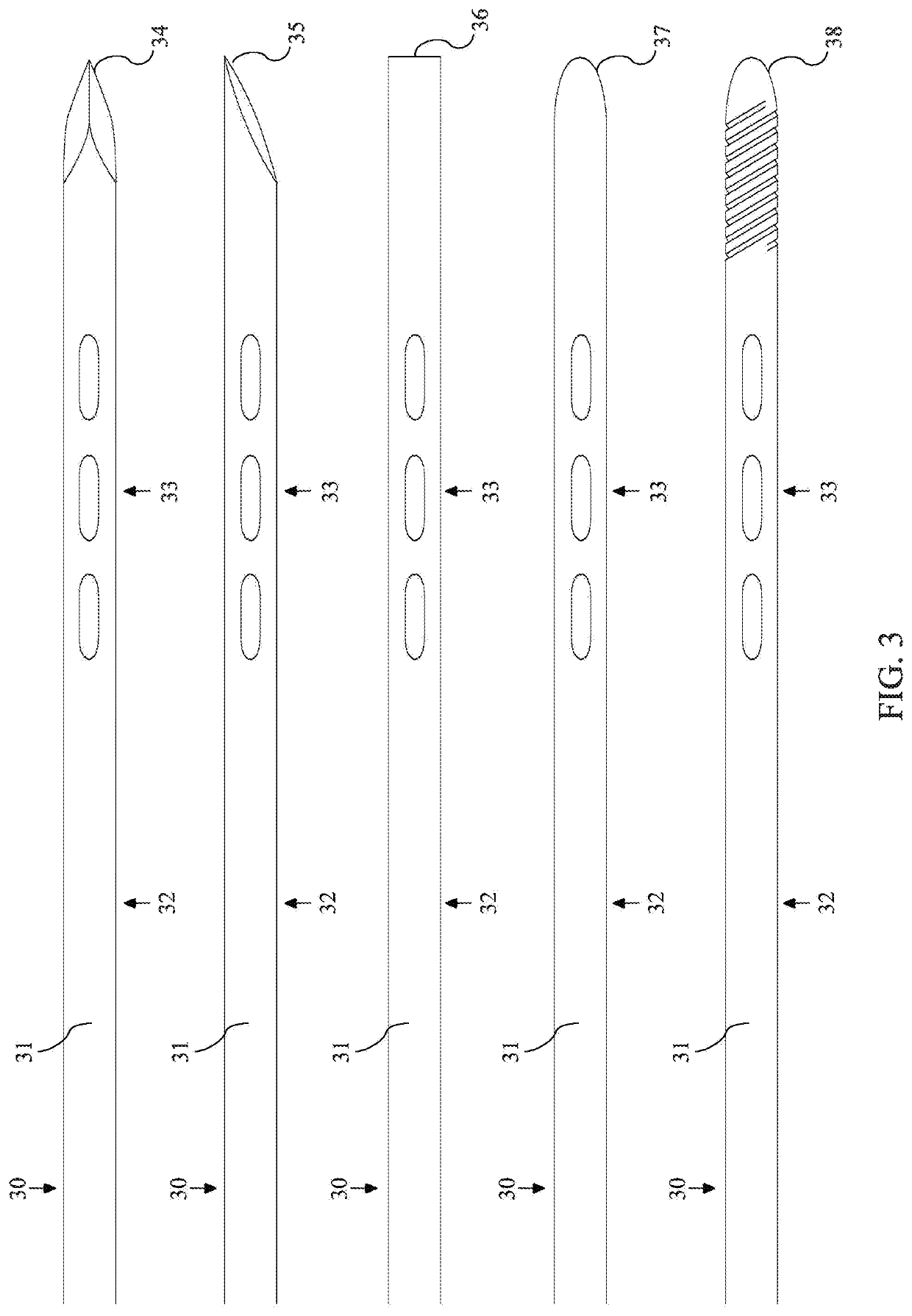Device and method for determining proper screw or implant size during orthopedic surgery
a technology for determining the size of the screw or the implant, applied in the field of orthopedic surgery, can solve the problems of limiting the type of feature of the user, affecting the healing of patients, and insufficient rough estimates, so as to achieve accurate and precise measurement distances inside the body, prevent damage to sensitive tissues, and prevent patients from healing
- Summary
- Abstract
- Description
- Claims
- Application Information
AI Technical Summary
Benefits of technology
Problems solved by technology
Method used
Image
Examples
Embodiment Construction
[0031]Although certain embodiments and examples are described below, those of skill in the art will appreciate that the disclosure extends beyond the specifically disclosed embodiments and / or uses and obvious modifications and equivalents thereof. Thus, it is intended that the scope of the disclosure herein disclosed should not be limited by any particular embodiments described below.
[0032]The present disclosure is directed to methods and devices for a guidewire, often referred to as a k-wire, for orthopedic surgeries. The devices and methods described herein allow for the measurement of objects and distances inside a patient's body when used in tandem with x-ray or fluoroscopy imaging during orthopedic surgeries. The devices and methods described herein can also act as a guide to accurately insert an instrument or implant, in the correct orientation, to a surgical site by passing the instrument or implant over the guide wire. The devices described herein can be used in junction wit...
PUM
 Login to View More
Login to View More Abstract
Description
Claims
Application Information
 Login to View More
Login to View More - R&D
- Intellectual Property
- Life Sciences
- Materials
- Tech Scout
- Unparalleled Data Quality
- Higher Quality Content
- 60% Fewer Hallucinations
Browse by: Latest US Patents, China's latest patents, Technical Efficacy Thesaurus, Application Domain, Technology Topic, Popular Technical Reports.
© 2025 PatSnap. All rights reserved.Legal|Privacy policy|Modern Slavery Act Transparency Statement|Sitemap|About US| Contact US: help@patsnap.com



